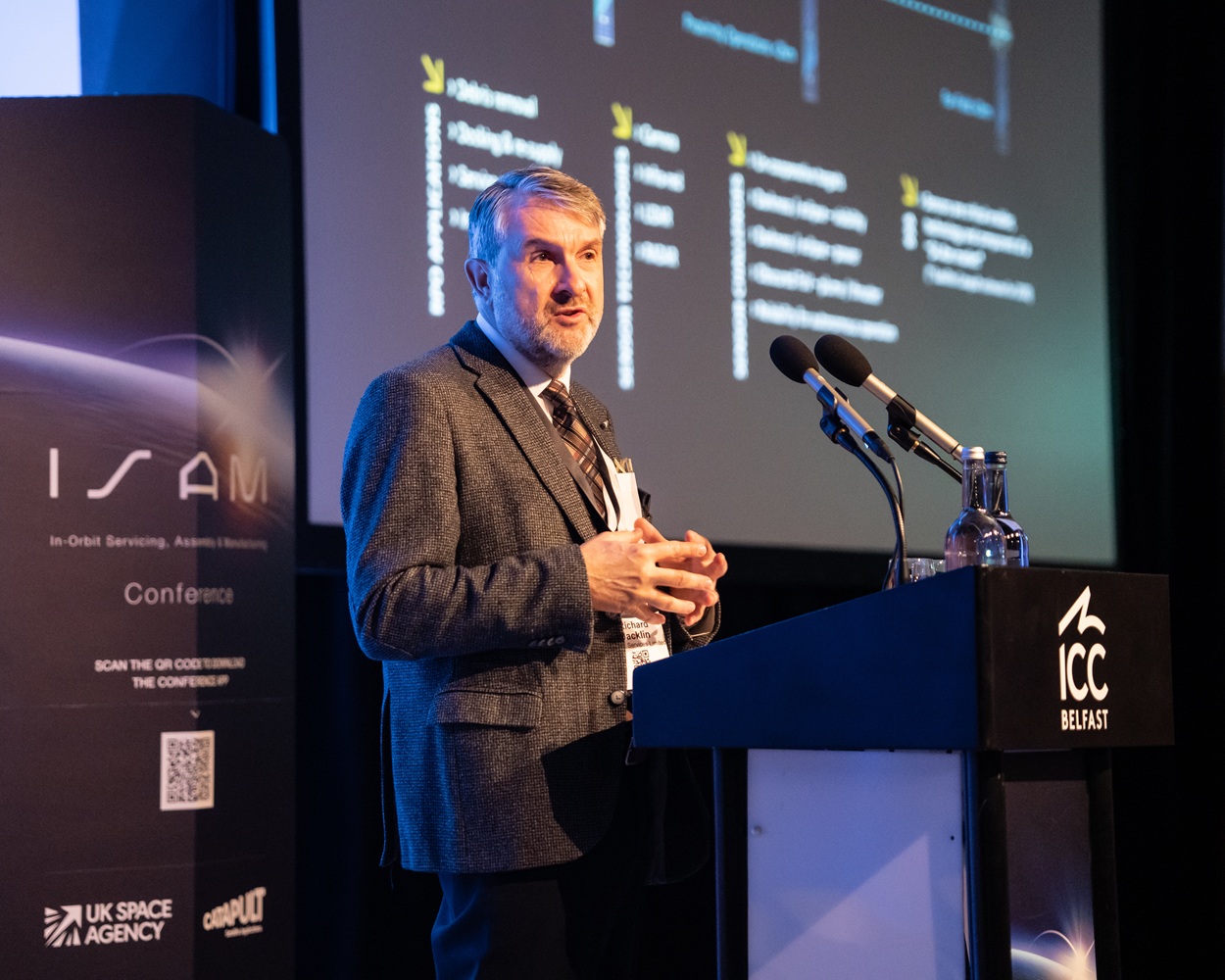Covid-19 crisis accelerates digital change in defence sector
 The Covid-19 pandemic is exposing organisations across all industries to external forces that they could not have predicted—and we have seen time and time again how technology has been instrumental to help them weather this unforeseen storm.
The Covid-19 pandemic is exposing organisations across all industries to external forces that they could not have predicted—and we have seen time and time again how technology has been instrumental to help them weather this unforeseen storm.
The global defence industry is no exception and for many the pandemic has fast forwarded digital transformation, with some organisations claiming to have completed years’ worth of transformations in a matter of weeks.
Despite having a reputation for being rigid and adhering to long-standing traditions, military organisations must be flexible in order to continue operations in a socially distant manner with thousands of personnel working from home, troops still deployed overseas, others building emergency hospitals, delivering PPE, and providing much needed emergency backup – and technology has been the key enabler.
In fact, they have been marching at the double. In a recent interview, senior figures in the UK military forces explained how the organisation had cut back heavily on bureaucratic processes and in their words "hit the accelerate button” on programmes to take advantage of emerging trends and technology. The Royal Air Force (RAF) has expedited 3D Printing, rapidly making operations leaner. The Royal Navy sees the current environment as the springboard for digital transformation programs across the board: people, the estate, and the support systems for ships.
Global military organisations responded to the pandemic by looking to increase investments in digital infrastructure. The US Department of Defense is currently trialling 5G technology to optimise military operations using transformational technologies like augmented reality in MRO and training and Australia has invested in research to develop new manufacturing technologies for the Hunter Class Frigate Programme. The initiative developed in collaboration between military, industry and academia, is aimed at providing replacements frigates optimised for anti-submarine warfare. The work will underpin a dramatic change in the way shipyards are planned and managed by enabling valuable integrated data insights across the entire supply chain.
As the new goes on parade, the old gets serious inspection
The militaries are not alone in their technology adoption. Recent IFS research highlighted the central role digital transformation is now taking within organisations despite – but more likely because of – the economic challenges that have accompanied the pandemic. Over 50% of respondents across multiple industries are looking to increase their spend on digital transformation going forward in response to the pandemic.
We can also see, for the defence industry, that the pandemic has not only accelerated the implementation of technology but it has offered a chance to call outdated processes into question. Covid-19 has created the opportunity to step back and re-evaluate operations, and there will be a number of advances in the defence industry in the wake of the pandemic.
I think for military organisations, there are four key areas where we can see the current business and economic effects of the pandemic acting as a catalyst for technology change.
1. Quarantine has forced businesses and governments to rethink traditional processes
Before the pandemic, the idea of flexible and remote working options would have been an unlikely prospect. As well as the commitment within the defence sector to rigid processes, in the past there has been a distinct reluctance from higher-ranking leaders to embrace remote working due to the deeply ingrained tradition of in-person, direct management and leadership.
But the coronavirus crisis has made a new working paradigm necessary for survival. Now that remote and flexible working has proved itself to be an efficient means of operating, it raises the questions of whether traditional processes and policies within defence organisations have been hindering productivity in the past. In a post-COVID world where new efficiencies are being realised, processes that were once deemed necessary are revealing themselves to be merely a force of habit.
For example, the long-standing tradition of requiring physical signatures on formal documentation is being rapidly replaced with electronic signatures generated by automated workflows—drastically reducing the wait between approval steps and reducing total throughput time. As a natural extension to that, many organisations are finding that lengthy approval workflow processes don’t empower their employees to act, but rather do the opposite. By reducing the number of total approval steps and raising authority thresholds for lower-level managers, employees are empowered to act, while freeing up valuable executive time to focus on more pressing strategic matters.
The defence sector can learn valuable lessons from the pandemic. If the defence industry continues to embrace change and realise the benefits on non-traditional working, it has the opportunity to further streamline processes and increase efficiencies across organisations—all while empowering the workforce to focus on results.
2. Remote working must go hybrid
Connectivity and bandwidth issues come in two flavours: planned and unplanned. Most organisations, civilian or defence, experience planned or unplanned outages on occasion for system maintenance, natural disasters, physical damage, or hardware failure, and in the case of defence organisations, physical attack. On these occasions, organisations will have contingency response plans for these scenarios and can be quite efficient in restoring their networks afterward.
However, the common need to perform prolonged operations, often in unfriendly territory, with no connectivity due to the lack of forward infrastructure and a critical requirement to maintain secrecy is arguably unique to defence organisations. In this case, a robust Disconnected Operations solution – capable of distributing and reconsolidating data and technical records when connected and operating autonomously when not connected – is a critical feature of disaster-proofing the operation.
With remote work increasing across the globe, connectivity has become more complex. Military organisations will be joined by civilian companies now seeking remote data access and the ability to continue working while offline and later reconnect and resync. As a formal risk mitigation technique, organisations need to harden their network solution with a true Disconnected Operations mode. Robust Disconnected Operations capabilities can capture, store and resync asset and workforce data regardless of connectivity. It could be the difference in a company’s ability to not just recover from planned or unplanned outages, but rather to continue operating seamlessly throughout—even with workforce and assets globally distributed.
3. Digital transformation can increase workforce efficiency without cutting personnel
As with remote working, many leaders within military organisations have been hesitant to welcome digital transformation and automation within the military, as they thought it would mean having to cut back on personnel. This has been holding back the progress of administration and headquarter reform for years. Yet in reality, digital transformation is more about optimising workforce efficiency rather than headcount reduction. This has two main benefits for organisations. Firstly, the coronavirus crisis has added additional pressure to existing budget cuts so companies want to retain the personnel they have so heavily invested in. This preserves capacity for business to ramp back up as the crisis resolves—while protecting the livelihoods of their workers and families. Secondly, removing waste through densification of value-added work results in real time and cost savings that can be reinvested into other activities.
Defence manufacturers face this challenge daily. Despite rapid advances in Industry 4.0 technologies, these companies must still maintain large human labour forces that cannot work from home and are often hired to support specific programs. When those programs get delayed – whether due to a crisis like COVID-19, budgetary shortfalls, or other severe disruptions – those skilled laborers must often be reassigned to other programs or let go to preserve cash. The companies best able to match their labourers to value-added work have the best chance of retaining them, preserving critical skillsets, and the right technology solutions can help highlight those opportunities for workforce realignment.
Before the pandemic, global militaries were under increasing pressure to reduce admin costs and decrease the size of headquarters. Organisations were unsure how to manage this without losing personnel. But the coronavirus crisis has demonstrated that this can be possible. The adoption of digital transformation and automation within an organisation streamlines administrative tasks and means more efficient back-office processes. Consequently, more resources can be reassigned to the operations that matter: moving resources from non-value-added processes to core operations can increase efficiency with no net change in force size.
4. Change is necessary but compliance is still on the frontline – to cloud or not to cloud?
Once seen as nuisance, regulations and red tape, compliance is rapidly emerging as a barrier to entry for large government contracts, which makes the aerospace and defence sector poised to best weather and recover from the current global crisis. Compared to the rapid decline and slow recovery underway in commercial aviation, government defence spending has remained relatively stable, with large multi-year contracts still being awarded for major new programs. Only those competitors with the right combination of demonstrated excellence across a variety of compliance areas such as ITAR, FedRamp, and CMMC are allowed to compete on certain contracts, and to the victor go the spoils.
With such importance attached to regulation, defence organisations must keep compliance top of mind if they are to transfer to remote operations on a more permanent basis. Therefore, remote operations require flexible software architecture and filing to adhere to regulations. And it is because of compliance that many A&D organisations are also hesitant to adopt cloud-only ERP deployments. In a recent IFS webinar attended by key decision makers within aerospace manufacturing, revealed that only 3% of respondents deploy their ERP software only using the cloud —whereas 64% said they use their software either on-prem only or a mixture of on-prem and cloud-based deployments.
For defence organisations to continue to embrace remote working and unlock further efficiencies while remaining compliant they need a tailored solution. With a managed cloud or secure hybrid enterprise software environment for critical compliance areas such as ITAR, organisations can explore remote capabilities knowing compliance is not an issue.
Changes made now will benefit the industry for years to come
For defence organisations, Covid-19 has increased the pace in which organisations would have made changes that were formerly just blueprints. It has expedited transformations from considerations to realities in a matter of months.
For an industry that has many traditions and processes in need of updating, this fast forward will provide a huge advantage for the future. By embracing digital transformation and choosing a capable enterprise software solution to do so, military organisations can realise the benefits of increased flexibility, increased efficiencies and streamlined processes, not just during the pandemic but long into the future.













